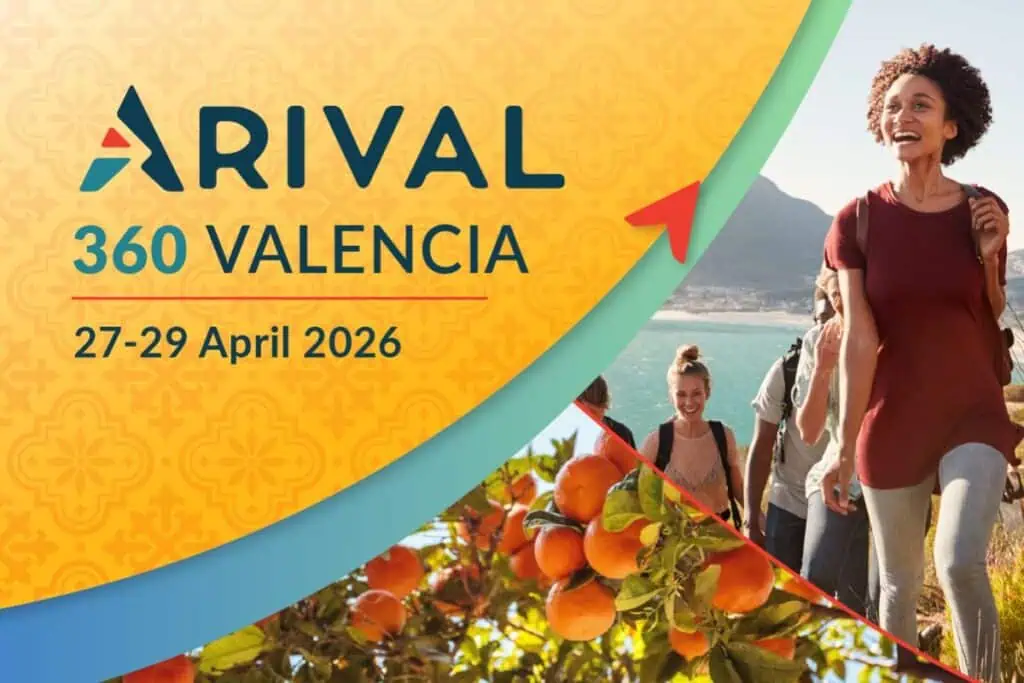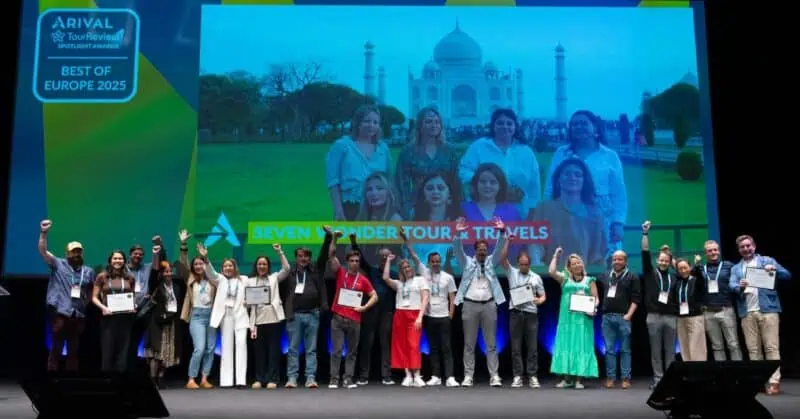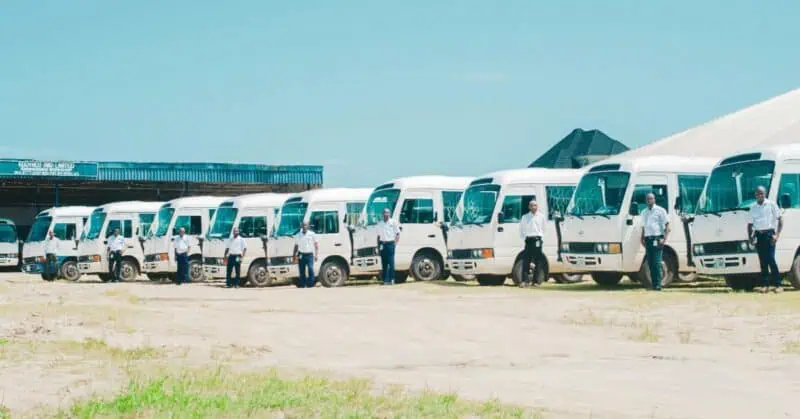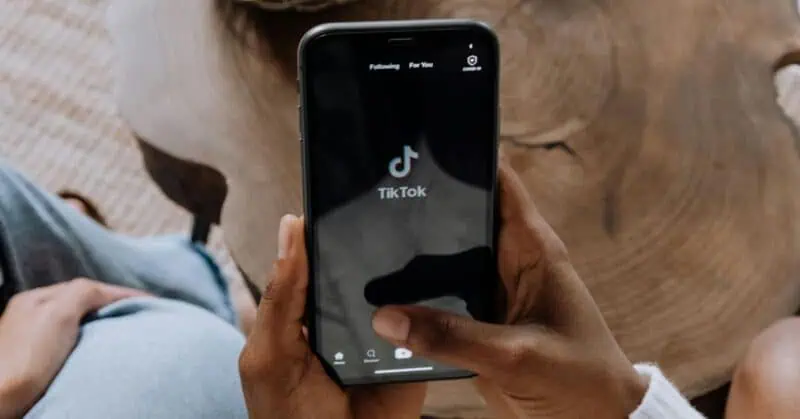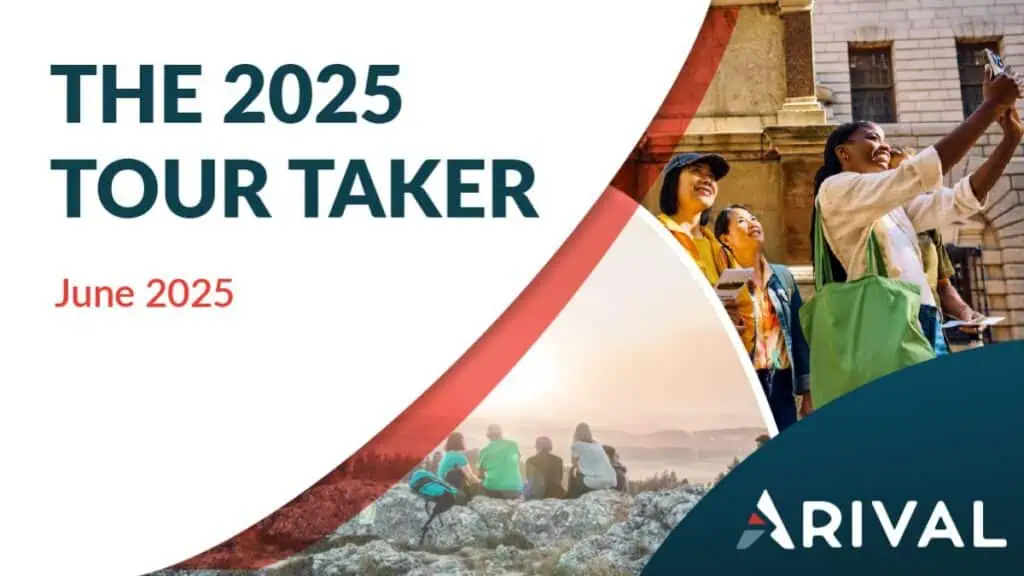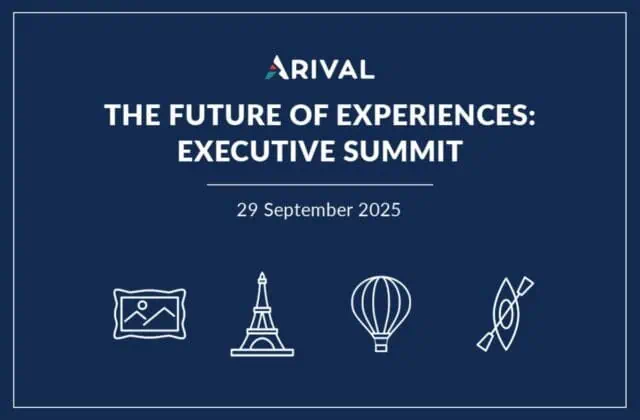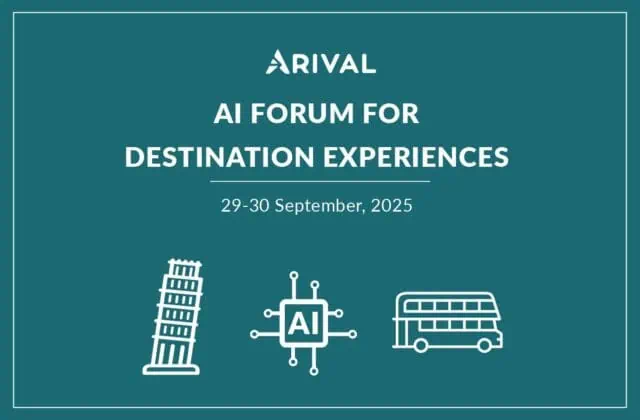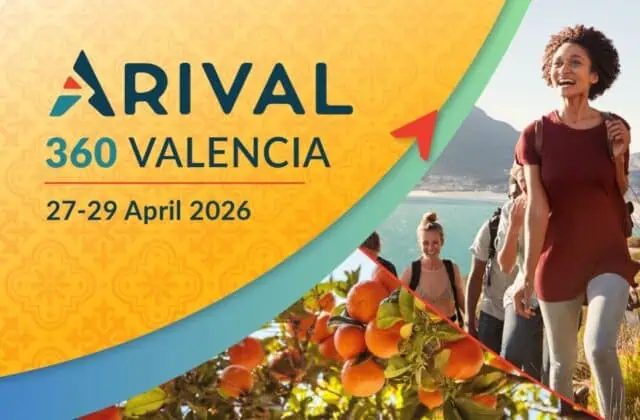What is Viator Accelerate, should you opt in to it, and is it worth it for operators?
At Arival, we keep track of developments among tech and distribution companies in the in-destination experiences industry, particularly as they impact operators, and with the launch of Viator Accelerate 2.0 by one of our sector’s largest online travel agencies (OTAs), we reached out to a number of operators using the program to get their take. We also asked Viator for responses to some commonly raised concerns and questions operators had about the program.
The premise of Accelerate is simple: pay higher commission, get more visibility with Viator’s customers and – ideally – generate more bookings through the platform. These “accelerated” products appear in front of customers in the form of ads, or “promoted experiences” shown on similar product pages:

While many operators expressed frustration with the higher cost of commission to participate in Viator Accelerate 2.0, others see it as an opportunity and are finding ways to use it to their advantage. Still others are using it as motivation to diversify their distribution strategies and enhance their direct marketing efforts.
The bottom line is this: is the increased commission worth it? Are there other factors you should be considering? In this article, we’ll explore what you need to know about Viator Accelerate 2.0, some of the pros and cons from the perspectives of operators using the program (with counterpoints for each), and some strategies to make the most of Accelerate 2.0 — or move beyond it.
What’s in this article:
- What is Viator Accelerate 2.0?
- Is Viator Accelerate 2.0 Worth It?
- Pros & Cons of Viator Accelerate 2.0, According to Operators
- What Strategies are Operators Using for Viator Accelerate 2.0?
- Viator Accelerate 2.0: Final Words & Recommendations
- Learn More About Distribution, Marketing and Working with OTAs at Arival
What is Viator Accelerate 2.0?
Acquired by Tripadvisor in 2014, Viator has become one of the largest and fastest-growing OTAs for operators and suppliers of tours, activities, attractions and other travel experiences. Operators who list their experiences on the platform pay a commission to Viator for each booking received through the platform. As Viator has grown, and as OTAs continue to be the fastest-growing sales channel in tours, activities and attractions, it has become increasingly challenging for operators to stand out against their competitors online.
The original Accelerate was launched in late 2021. In exchange for paying a higher commission, Viator would promote the operator’s listing in the form of contextual ads, according to Viator CCO Sarah Dines.
But many operators complained that Viator didn’t provide enough visibility into the performance of their listings: they wanted to see views, conversion rates and – essentially – what the higher commission was getting them.
Officially launched in late 2023, Accelerate 2.0 is intended to address this operator feedback for greater transparency, said Dines. The updated program shows ad impressions an operator can expect to receive for the commission they pay, and how that compares to their competitors.

Operators can set different commission rates by product, and can adjust them on the fly. Operators can choose to opt in to the Accelerate program with certain products and not others. Operators can also elect to pay a higher commission to remove competitor ads from their own product listings, as shown in the screenshot above. This percentage differs by product and by operator: operators we spoke to had commissions set everywhere from 28% to the high 40s, and saw offers ranging from 42% to as high as 51% commission to remove competitor ads.
27-29 April 2026
Insider Pro Access Members Save 20%
THE event of the year for the European in-destination experiences industry
Get Your Super Early Bird Ticket Today!|
Is Viator Accelerate 2.0 Worth It? Pros & Cons
So higher commission means more exposure, but is the tradeoff worth it? Operators we spoke with were overall mixed on their responses to Accelerate 2.0. Here are a few of the common benefits and concerns that emerged:
Pros & Cons of Viator Accelerate 2.0, According to Operators
| Benefits of Viator Accelerate 2.0 | Concerns about Viator Accelerate 2.0 |
| Small Companies Can Compete | Higher Commissions |
| Visibility for New Tours | Emphasis on Ads Over Reviews |
| Reporting and Transparency | Cost Goes Up with More Participation |
Pro: Allows small operators to compete with larger companies
Larger companies have larger budgets for marketing and advertising, but some smaller companies feel participating in Viator Accelerate helps them to compete on the same scale.
“Viator, as an open market platform, allowed us to be competitive with multi-million dollar companies,” explained Liam Gideon from Unscripted by Guided Tours DC.
“We noticed how much marketing and advertising Viator does for us and one of the last things any small business spends money on is always marketing,” Gideon shared. “It’s invaluable, we may take a bigger hit on it [with higher commissions, but] if you’re making 60% of 30 bookings that’s a lot better than 75% of two.”
Counterpoint: While the point that OTA commission is essentially a marketing cost is a common one, not all operators agree that the higher cost of commission is worth that. “They will argue they are doing the marketing for you and giving your products a wider audience. While that is true it is not worth 30-45% of the sale,” according to Stacey Spaeth, Director of Sales at WeVenture.
Con: Higher commissions can be a burden, especially on small operators
While some operators are willing to accept the higher cost for more exposure, for others higher commissions — regardless of how they’re packaged — are seen as harmful, particularly to small operators.
“The Accelerate Program Viator is pushing is, for lack of a better term, nothing more than a ‘pay to play’ scheme,” said Spaeth.
“This is doing nothing more than hurting small operators,” Spaeth continued. “All of the cost and overhead burden to deliver these products falls on the operators and as we know the cost of everything has gone up from food & beverage, transportation, employee costs, insurance, admissions, etc. To continually give away more commission takes away most if not all of the profitability for a small operator.”
“It makes the ability to include things like a pint of beer at a pub a lot more challenging,” added Jack Harris, founder of Tally Ho! Experiences, explaining that after accounting for commission, tax and other distribution costs, the cost of adding a beer goes from £6 to almost £15. “It makes…adding value a lot more complicated.”

Counterpoint: While 20, 30 or even 40 percent commission may seem unreasonably high to many operators, Steven Garcia, founder and CEO of Empire Tours & Productions, pointed out that this is still an improvement on how things worked before OTAs entered the picture.
“I can’t complain about the commissions,” he said, explaining that when he started operating tours, concierges controlled over 90% of the bookings, and booking recommendations came at a far higher cost, with the expectation to need to wine and dine them, even to slip money under the table, in order to get concierges to recommend your tours to travelers.
Pro: Viator Accelerate gets new tours in front of people quickly
Setting your commission higher means paying for ad placement, which can be worth it when you’re trying to promote a new product.
“Where it helps me is, I know I have a great product but if I can’t get it in front of people, it never has the chance to trend,“ shared Garcia. “With Accelerate… I can get it out there, I can get in front of people and it gives it a shot.”
Also, if you set the commission high to start with, you can always drop it down later once the tour has gained momentum, Garcia added.
Getting visibility for new product listings with no reviews is an ongoing challenge for operators. With the original Accelerate, products were required to have a certain number of positive reviews before they could participate. Accelerate 2.0 has dropped that requirement, making it easier for operators to get visibility on untested products.

Counterpoint: This can also mean products with few reviews and low ratings end up in front of travelers, as in the far left listing above: more on this concern below.
Con: The focus on ads de-emphasizes the importance of reviews
While removing the review requirement for Accelerate listings may lower the barrier to entry for new operators or established operators launching new products, some operators are concerned that de-emphasizing reviews disadvantages companies that have put in the time and energy to get them.
For Prague City Adventures, who have worked hard to earn good reviews (and they have succeeded — they are among the finalists for the Arival TourReview Spotlight Awards this year), Accelerate’s focus on commissions for visibility is counterproductive.
“I find that quite upsetting,” shared owner Michaela Vasvi, lamenting that paying more for visibility means quality products aren’t necessarily the ones that get featured, “and Viator should listen to that, because it means the client is not necessarily getting the best product.”
Counterpoint: While ads can mean more visibility in the “promoted experiences” section, good reviews and quality listings are still an important part of the algorithm. Commission does play a role in sort order, however participation in Viator Accelerate does not increase the importance or weight placed on commission, according to Dines:
“Commission earned by Viator has also long been one of our many sort factors. Just as improving your reviews, photos, and listing accuracy will impact your place in sort – so will increasing your commission. What’s important here is that Accelerate does not re-weight our sort factors,” Dines emphasized. “It does not make commission a larger part of the calculation.”
Pro: Accelerate 2.0 gives tools for reporting and competitor comparison
One of the problems with the original Accelerate program was a lack of transparency on how the increased commission actually impacts impressions, and ultimately bookings. This is something that has been improved with Accelerate 2.0, according to Amigo Tours CEO Jose Arozarena.
The original Accelerate program “was a very confusing thing,” shared Arozarena, explaining that since it came along with the ramp up after Covid, it was difficult to see how much increased bookings had to do with the season and the post-Covid momentum vs. the increased commissions and visibility of Viator Accelerate.
“Now you can see how many impressions, just like Google Ads, how many impressions you get with that extra percent, how you are doing vs. your competitors, how you’re doing vs. your destination… and how much impact you have on that.”
“We removed the visibility score from Accelerate 2.0.,” explained Dines. “We heard feedback that the visibility score wasn’t clear enough – so we replaced it… we now show the number of ad impressions delivered for an incremental margin.”
Counterpoint: Some operators still don’t think the reporting provides enough insights for the cost. “It kind of feels like gambling, you don’t really know what you’re getting [for the higher commission],” said Harris. “It tells me that I’m doing better than 95% of my competition. Now, I don’t know who my competition are within that set.”
“I think I would feel better about it if there were some more insights about the metrics so we can understand our customers better,” he added.
Con: Cost to remove competitor ads goes up with participation
One option operators have with Viator Accelerate 2.0 is to remove those competitive product ads from their own listing pages. However, they have to increase their commission in order to remove those ads. This would mean that when someone visits your product listing on Viator, they are not shown “promoted experiences” while on your page.
The amount required to remove competitor ads varies by operator and by product, based on demand. As Dines explained, “The cost of participation is driven by market forces; high demand will drive up the cost of participation, and likewise low demand will drive it down.” In other words, the more interest there is from operators to participate in ads related to your products, the more expensive it will be to remove those ads.

Several operators complained the high cost of removing competitor’s ads was unfair.
“How does that help small operators?” asked Spaeth. “So basically no matter how well our products perform another operator can just cut you out? I don’t think that’s fair and honestly I wouldn’t feel right doing it to our competition… Viator is turning it into a way for them to be more profitable, not the operators.”
“How much the price would have to be for us to still make what we need to make out of it?” questioned Vasvi. “That doesn’t make the product sellable.”
Counterpoint: Some operators are less concerned about the competitive aspect of Accelerate, observing that it only increases the importance of having a good product to start with.
“It’s oldschool capitalism: if you opened two ice cream parlors only one’s going to survive and it’s going to be the best one,” said Garcia. “If you have great products you’re going to do well… all the best people will rise to the surface with a system like this.”
Dines noted that quality will always be the biggest factor in ranking on Viator. “If we don’t serve great, relevant products, we don’t get bookings and neither do operators. For that reason, we’ll always prioritize quality in sort.”
Challenges with customer service
Although not unique to the Accelerate program, several operators mentioned this as a concern, especially if they are paying higher commission via Accelerate. They feel like they should get more bang for their buck.
For Garcia, who overall had mostly positive things to say about Accelerate, customer service is one of the weak points. “One of the things I’ve noticed is that, all these guys have gone public under my tenure — Viator, Airbnb — before they go public they have the best customer service people.” He explained that now, with outsourced customer service call centers, it’s a lot harder to get the service you need when you need it.
“It seems the company is expecting more and more commission for less and less customer service on the provider side,” observed Spaeth.
Along with customer service for operators, customer service for the end client — the traveler — also suffers. As Harris explained, because customers aren’t given the operator’s contact information, and the operator isn’t able to send things like their own meeting points or map pins to guests, last minute customer inquiries such as “how to find the meeting point” have to go through Viator chat. “When people are new to our city you’re always going to have people who struggle to find our meeting point,” said Harris, and communication lapses here can result in guests arriving late or canceling at the last minute, not to mention how that can reflect poorly on the operator’s reputation in negative reviews.
Counterpoint: While communications are a challenge for some operators, others are happy with Viator’s customer service overall. “We have a rep with Viator who’s always responsive, came out and met with us directly and gave us metrics on what people were searching for to help us design new products. They’ve been a very strong partner for us,” shared Gideon.
30 September – 3 October 2025
Insider Pro Access Members Save 20%
THE event of the year for solutions-focused In-Destination Experience creators and sellers
Get Your Spring Savings Ticket Today!
What Strategies are Operators Using for Viator Accelerate 2.0?
While some operators agreed Accelerate was worth it overall, and others used Accelerate with reservation, a common theme that emerged from conversations with operators was that increasing commissions via Accelerate needed to be accompanied with a clear strategy in order to make the most of it.
Another common theme was that the direction Viator is going is motivating some operators to adjust their strategies to reduce their dependence on the OTA. Here are a few of the strategies operators shared.
Strategy 1: Consider commissions when setting your net rates
To succeed with any distribution strategy, and with Viator Accelerate 2.0 in particular, an essential starting point is to have a clear idea of your margins, and how to set your net rates. “Understand your margins before you try to even go down this route,” advised Harris. “Have at least 20% or more built in from the offset.”
“Accelerate is not for all the companies and it’s not for all products,” added Arozarena. “We use it mainly for bus tours and tours that do not have a big percent of their cost with entry tickets.” Arozarena explained that for some of their tours involving entry tickets, the margin is too small to play with the commissions. “Try it, just take care of your cost and your profit,” he advised.

Strategy 2: Use it to give new or seasonal tours a boost
Several of the operators we spoke with explained that they’ll increase the commission rate to fill spaces in times or seasons they need to, or to help promote a new tour.
“Accelerate, if you run it correctly, in times or in seasons that you need to fill buses, it’s great,” said Harris.
“It was very difficult to get bookings on new products from scratch until you have reviews, until you have a certain number of bookings,” explained Arozarena. “Now with Accelerate 2.0 you can add that extra exposure, so you can show that product to the final client and start getting bookings.”
The flip side of this is that you can reduce those commissions when your new tour has gained enough momentum, or you want to focus more on direct bookings, or you’ve filled enough seats, etc. “You can always pull it back at any time,” advised Gideon. “They allow us to go back and forth and tailor it based upon what we’re willing to do at the moment and what we feel we need to do.”

Strategy 3: Diversify your distribution
While some operators we spoke with are all-in on Viator and Accelerate 2.0, others are responding to the developments by diversifying their distribution strategy.
For example, by branching out to other OTAs. GetYourGuide, Klook, Tiqets, TUI Musement, Airbnb and Trip.com were all mentioned by the operators we spoke with. However, there are a lot of different options when it comes to online distribution: a smart distribution strategy considers both large and smaller more niche or region-specific OTAs.
Also, there is more to distribution than OTAs. Operators can consider alternative distribution channels, such as multi-day tour operators, cruise lines, and content creator platforms (or “The OTAs for Gen Z”).
“I think signing onto Accelerate should be a piece of a puzzle to an overall growth strategy: don’t put all your eggs in one basket,” advised Spaeth.

Strategy 4: Focus More on Marketing for Direct Bookings
Some operators are also using Accelerate 2.0’s higher commission structure as motivation to reduce their dependence on Viator, and OTAs in general, for bookings.
“We’re happy with the customers from Viator but it’s not what we want to rely on,” said Vasvi, who explained that since Covid, Prague City Adventures realized they need to differentiate and a large part of that has meant focusing on website development to make direct booking easier, as well as ads. “Viator happily suggests we raise the commission to 51% to remove competitors ads… we chose to invest more in Google ads instead.”
Vasvi is not alone in her approach. As Harris shared, “I’m not necessarily going to be turning Viator off but I’m thinking ‘hell if we can afford to lose £100 per ticket why aren’t we using that to experiment with direct ads etc… trying to grow beyond dependency on one OTA, reward customers for booking directly. If we throw £60K at direct marketing, even if we lose on conversion rates, at least we have the customer data.”
“It’s all about marketing,” added Spaeth. “If you want to go after direct business you need to market through social media channels, paid ads, etc. Building brand awareness. We are focused on building a new website to increase traffic in 2024. It’s a hard game to win as that is Viator’s core business. They can spend much more of their revenue/profits on advertising as that is most of what their overhead is. They are basically a marketing platform.”
Growing direct bookings is a recurring hot topic among operators at Arival. Recently, we discussed competing with OTAs on marketing with Nate Andrew, Managing Director of Blend: find that interview here. See also: Arival’s latest Guide to Effectively Marketing your Tours and Experiences.

Strategy 5: Have a Great Product
Last but definitely not least, something nearly every operator mentioned was the importance of having a good product. Whether you rely on Viator for 10% or 90% of your bookings, whether you pay 21% or 51% in commissions, if you don’t have a good product it won’t matter.
“If you’re starting out and you have very few reviews, it’s helpful to get your product in front of people, but you always gotta start with strong product,” said Gideon. “Because the product itself is what sells on there… you have to have the ability to run a good business.”
“The extra commission is going to put the product in front of them,” said Arozarena, “whether they book or not is because of the reviews. You can give 50% of commission on a tour and you can put it in front of the client but if you have a two star product the client will never book that tour.”
“It’s so nice that the platform’s algorithm decides,” said Garcia. “If you’re putting up a great product that’s all you gotta do, and that’s way easier than partying with concierges til 4am on a Tuesday. I think that new operators are very lucky.”

Viator Accelerate 2.0: Final Words & Recommendations
As operators grapple with how to get noticed in an increasingly competitive landscape, Viator Accelerate 2.0 offers an intriguing proposition: in exchange for a higher commission, operators can increase the visibility of their products on the platform.
Clearly, there are pros and cons to this, with the increased commission at the top of the “cons” list for many operators. There is undeniably a higher cost to be considered, and companies that have worked hard to improve their rankings organically through optimizing their listings and building up positive reviews may be frustrated by others buying their way to increased exposure. However, there is also an opportunity for operators to benefit by using Viator Accelerate as part of a strategy, for example to increase exposure on new products. But, as many operators advised, don’t put all of your eggs in one basket: explore other distribution channels and marketing opportunities as well.
At the end of the day, Viator Accelerate 2.0 is a tool like any other marketing or technology tool that companies can use strategically to promote and sell their products. Use it within a broader tourism marketing, pricing and distribution strategy if and when it benefits you. Take advantage of its flexibility by experimenting with it, and glean insights from its reporting that will help you better understand your audience and competition, and improve your products — because at the end of the day, it’s the quality of your experience that matters most.
27-29 April 2026
Insider Pro Access Members Save 20%
THE event of the year for the European in-destination experiences industry
Get Your Super Early Bird Ticket Today!|
Learn More About Distribution, Marketing and Working With OTAs at Arival
Join us at the next Arival event to learn more about the latest with Viator and other OTAs as well as have the chance to connect with and learn from other operators. We’ll also discuss alternative distribution strategies, the latest in marketing for tours and experiences, and so much more. Hope to see you there!
Become an Insider Pro Access member today and get access to the full library of Arival research, plus many other benefits such as free consulting sessions, special discounts and 20% off in-person events, starting from $179 per year.
Sign up to receive insights tailored for the in-destination industry as well as updates on Arival.




